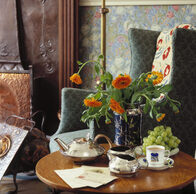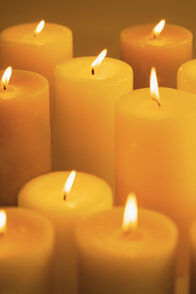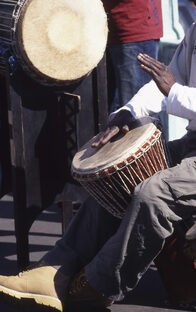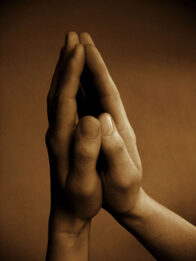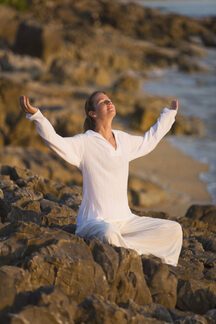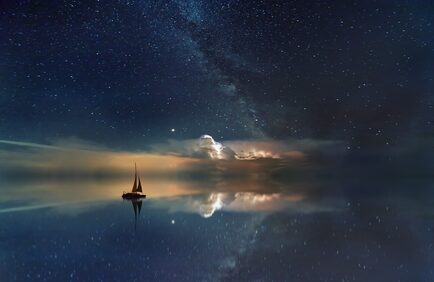
A woman should be like a fortified city, but so many women today have their walls and constitution broken down. It can be broken down by abuse, by health problems, and by neglect. It can be broken down by rape, by verbal abuse, and by stigma. Poverty never makes for a functioning citadel. What should we do to heal a broken down city? Studying the city of Cacassone has given me some insight. It's history is prophetic.
More on Carcassone . . .
The first signs of settlement in this region have been dated to about 3500 BC, but the hill site of Carsac—a Celtic place-name that has been retained at other sites in the south—became an important trading place in the sixth century BC. The Volcae Tectosages fortified it and made it into an oppidum, a hill fort, which is when it was named "Carsac".
The folk etymology—involving a châtelaine named Lady Carcas, a ruse ending a siege, and the joyous ringing of bells ("Carcas sona")—though memorialized in a neo-Gothic sculpture of Mme. Carcas on a column near the Narbonne Gate, is of modern invention. The name can be derived as an augmentative of the name Carcas.
Carcassonne became strategically identified when the Romans fortified the hilltop around 100 BC and eventually made it the colonia of Julia Carsaco, later Carcaso, later Carcasum (by the process of swapping consonants known as metathesis). The main part of the lower courses of the northern ramparts dates from Gallo-Roman times. In 462 the Romans officially ceded Septimania to the Visigothic king Theodoric II who had held Carcassonne since 453. He built more fortifications at Carcassonne, which was a frontier post on the northern marches—traces of them still stand.
Theodoric is thought to have begun the predecessor of the basilica that is now dedicated to Saint Nazaire. In 508 the Visigoths successfully foiled attacks by the Frankish king Clovis. Saracens from Barcelona took Carcassonne in 725. King Pepin the Short (Pépin le Bref) drove them away in 759–60.
A medieval fiefdom, the county of Carcassonne, controlled the city and its environs. It was often united with the county of Razès. The origins of Carcassonne as a county probably lie in local representatives of the Visigoths, but the first count known by name is Bello of the time of Charlemagne. Bello founded a dynasty, the Bellonids, which would rule many honores in Septimania and Catalonia for three centuries.
Cathars being expelled from Carcassonne in 1209
In 1067, Carcassonne became the property of Raimond-Bernard Trencavel, viscount of Albi and Nîmes, through his marriage with Ermengard, sister of the last count of Carcassonne. In the following centuries, the Trencavel family allied in succession with either the counts of Barcelona or of Toulouse. They built the Château Comtal and the Basilica of Saints Nazarius and Celsus. In 1096, Pope Urban II blessed the foundation stones of the new cathedral.
Carcassonne became famous for its role in the Albigensian Crusades when the city was a stronghold of Occitan Cathars. In August 1209 the crusading army of the Papal Legate, abbot Arnaud Amalric, forced its citizens to surrender. Viscount Raymond-Roger de Trencavel was imprisoned whilst negotiating his city's surrender and died in mysterious circumstances three months later in his own dungeon. The people of Carcassonne were allowed to leave—in effect, expelled from their city with nothing more than the shirt on their backs. Simon de Montfort was appointed the new viscount and added to the fortifications.
In 1240, Trencavel's son tried to reconquer his old domain but in vain. The city submitted to the rule of the kingdom of France in 1247. Carcassonne became a border fortress between France and the Crown of Aragon under the 1258 Treaty of Corbeil. King Louis IX founded the new part of the town across the river. He and his successor Philip III built the outer ramparts. Contemporary opinion still considered the fortress impregnable. During the Hundred Years' War, Edward the Black Prince failed to take the city in 1355, although his troops destroyed the Lower Town.
In 1659, the Treaty of the Pyrenees transferred the border province of Roussillon to France, and Carcassonne's military significance was reduced. Its fortifications were abandoned and the city became mainly an economic center that concentrated on the woollen textile industry, for which a 1723 source quoted by Fernand Braudel found it "the manufacturing center of Languedoc".It remained so until the Ottoman market collapsed at the end of the eighteenth century, thereafter reverting to a country town.
(Source: Wikipedia)
"The French city of Carcassonne is one of the most perfectly preserved walled cities of the world and the largest walled city in Europe. The fortification consists of two outer walls, towers and barbicans built over a long period of time. One section is Roman and is notably different from the medieval walls with the red brick layers and the terracotta tile roofs. One of these towers housed the Catholic Inquisition in the 13th Century and is still known as ‘The Inquisition Tower’. Portions of the 1991 film ‘Robin Hood: Prince of Thieves’ were shot in and around Carcassonne." (Source: https://www.touropia.com/walled-cities-in-the-world)
Carcassone is one of the 22 most impressive walled cities in the world, third after Jerusalem. The city given as a metaphor for the Holy City in the Bible is Jerusalem, and her history is depicted by scribes, saints, and Biblical scholars down through the centuries. Those living outside her gates were those rejected by society. They lived in the desert, and were in the company of shepherds, and other rough characters who lived in the wilds. This is typically where prophets lived.
To live within the gates of the walled city is to be fortified. This is a description of safety. Today in modern times it also refers to the food supply being fortified by various vitamins and minerals to prevent disease. When you eat a fortified food, you feel safe. You think that you are getting the minimal amount of vitamins and minerals you need to prevent things like scurvy, beriberi and pellagra. The idea that our diet is fortified is somewhat deceptive. So is the walled city. Why would someone choose to live outside it, for instance?
There is a desire to return to the natural state of food, as there is a desire in man to be a survivalist and return to the wild. A prophet is someone usually unrefined, so they prefer to be unfortified also. The natural state of the desert is closer to the natural state of being with God, without many possessions, without family, without distractions of the acceptable life. Without the security and provisions of the fortified city and those that belong to the common good citizen. Eventually, in the modern age we will seek a return to natural materials, and clothing, linen, and textures that exemplify the desert colour patterns, and rough feel. This is akin to our roots, of travelling nomads, living in tents around the time of Abraham.
I buy a lot of the material in my house in linen including bedding, tunics, and long dresses, coats, some of it flax linen from Europe. I try to furnish my house with solid wood furniture, and with bamboo, and jute. I have hyacinth baskets in my living room that smell like a tobacco field. This return to natural fibers, materials, and smells gives a sense of the nomadic existence of the desert. This is also sometimes called transience. I think I have lived in fourteen residences of my own or with roommates since I left home at eighteen. I think it is a worthwhile gift to develop your roots, your reputation, and stay in one place but the Lord has also used a nomadic perspective to not let me get too deep for everyone to understand or relate too. I like the idea of living in one place, but I feel now that I live in the desert outside the city and that I am rejected by most. I am accompanied by a couple of rough-looking shepherds, and we pitch our tent, and have a campfire most nights, and eat under the stars.
Living with little and having little, is also a skill that allows us at points in our lives to draw nearer to God. It simplifies communion with the Holy One of Israel. It brings out our strengths, our fortitude, and our self-reliance. I try to feel joy in these circumstances, but sometimes it is absent. There is almost a long silence between you and God. He is working, but in ways you cannot see, taste, touch, or smell. It is beyond the senses.
Song in the Night
Jesus, Savior
Are you here tonight?
Broken, weary
Can you hear me tonight?
I cannot see you
I cannot touch you
I cannot hear you
but I sing and you have no words
Music and lyrics by Emily Isaacson (unpublished)
Right now I will be honest with my readers and followers and say we need more provision than we have. If you ever feel called to donate to my ministry, now might be the time. I have opened a Go-Fund-Me account that you can donate to on the home page: www.wildlilyinstitute.com
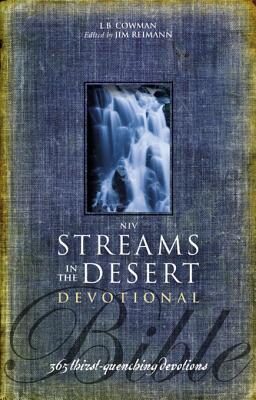
"Are you in a desert experience? Let your thirsty soul be restored and refreshed through the daily devotions in the NIV Streams in the Desert Bible.
At some point in our lives, we encounter the trials and deep mysteries of the Christian faith. And when we do become like a thirsty traveler, what we most desire is for hope, comfort, and encouragement to burst forth like a sparkling, clear river.
The hopeful daily readings in this Bible promise to revive and refresh you--one of today's generation of faithful sojourners--by providing daily devotions in modern, easy-to-understand language that beautifully captures the timeless essence of the original. These devotionals are presented alongside Scripture using the popular New International Version of the Bible.
While the devotions in this Bible were originally written by L. B. Cowman--a pioneer missionary in Japan and China from 1901 to 1917--this devotional Bible has been edited by James Reimann. It maintains the beauty of the original Cowman writings while making the devotionals more accessible for the readers of today." (Source: Goodreads)

